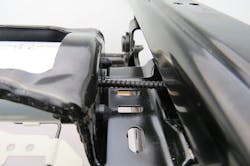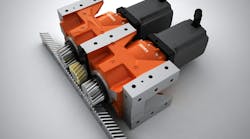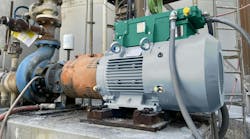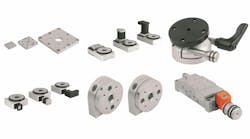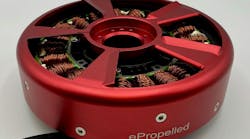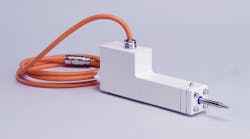Keeping Up with Expectations to Reduce Cabin Noise
By Michael Boehm, Sales Manager at S.S. White Technologies, Inc.
The focus of today’s car interior design is to provide ergonomics and convenience with a high level of comfort. More and more gadgets delight our driving experience, and many of them move, open, or adjust with the push of a button. As the cabin includes an increasing number of moving parts, engineers benefit from flexible shafts that grant freedom of design to separate the actuator motor from the driven component. However, using the wrong type of flexible shaft can create unwelcome noise. Flocked flexible shaft designs offer a solution to engineers seeking quieter operation of accessories.
Expectations for reduced in-cabin noise increased drastically over the last decade. Hybrids and electric vehicles became the benchmark in regards to vehicle noise. Conventional gas-powered cars followed, and better noise insulation and active noise canceling make the car interior quieter than ever. So, noise sources from within the cab—actuators for power seats, power-adjustable pedals, power steering column adjustments, etc.—have to get quieter as well. Noise is not just a matter of decibels, but also of noise quality. Sounds that were acceptable a couple of years ago are perceived today as too loud and obnoxious.
Flex shafts do not create noise per se, but they do transmit vibrations from the actuator motor. By dampening these harmonics, a noise quality can be achieved that is not as disruptive or unpleasant. This noise dampening occurs when a layer of flock yarn—a felt-like material—is applied as the top layer of a flex shaft, giving it a pipe-cleaner-like appearance. In addition to dampening vibrations, flock yarn also eliminates the need to use grease or any other lubricant. Instead, S.S. White flocked flexible shafts operate dry inside the plastic tube that encases them.
Now, the automotive interior continues to evolve further. Even in conventional cars, cabins will become more flexible, adjustable, and configurable in the future. Seats will be able to swivel to the outside for easy access. They will be even more adjustable, with sensors allowing the seats to adapt themselves to the physical characteristics of the driver or passenger who sits in them. A person’s preferred seating position might be stored in an app, so when he or she rents a car, it's already adjusted to him or her. Access to the rear seats in a coupe will happen with power easy-entry functions, and so will the fold and tumble of all seat rows in SUVs and minivans. Center consoles will slide back and forth by the push of a button. When considering the interiors of future self-driving vehicles, possibilities become almost endless.
For all these challenges automotive interior engineers face, flexible shafts are an ideal component. They allow the motor to be detached from the driven part, allowing for freedom of design otherwise not possible. They also compensate misalignments, simplify component installation, and can overcome relative movement from one component to the other.
S.S. White is preparing for the future. The next generation of flocked flexible shafts are in development and under testing. These shafts will be lighter, rotate faster, offer less resistance, cost slightly less, and remain ecologically sustainable. Equipped with these new flocked flexible shafts, engineers will tackle new challenges to enable quiet, reliable and efficient operation of motor-driven interior elements.
